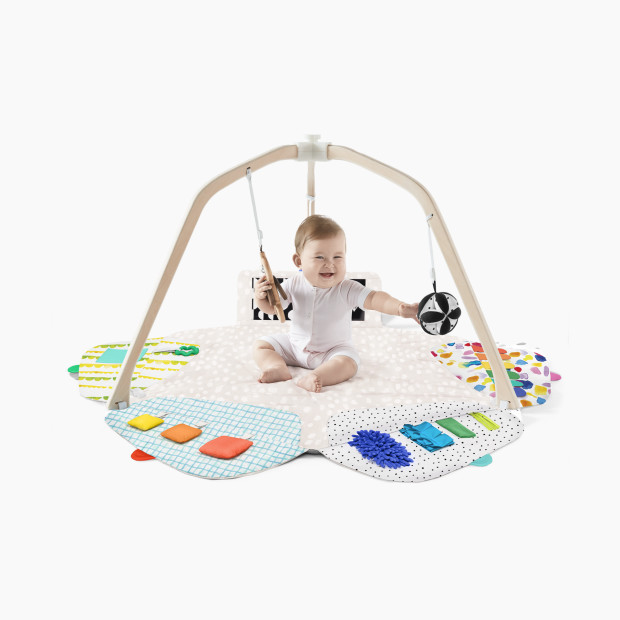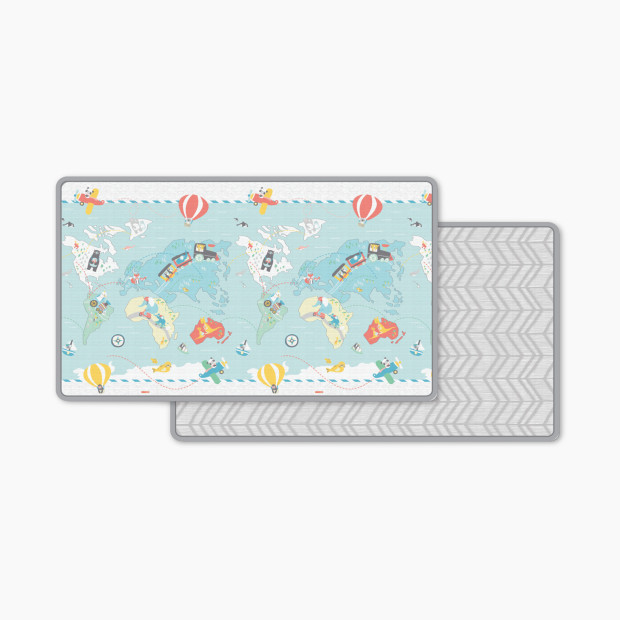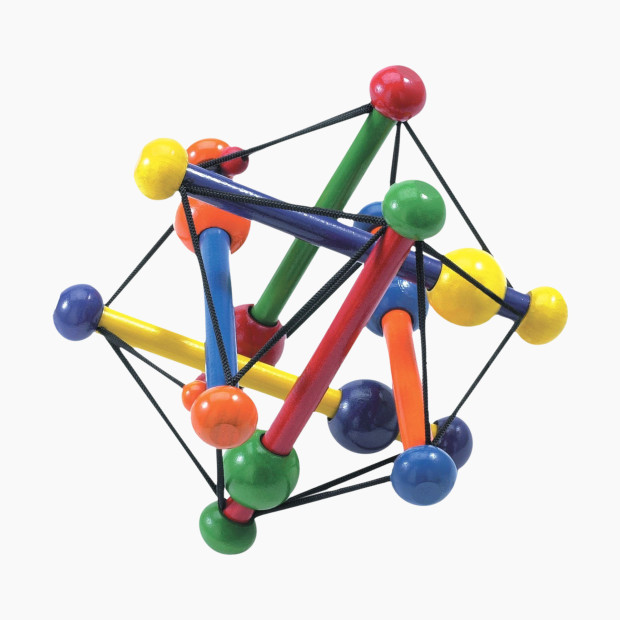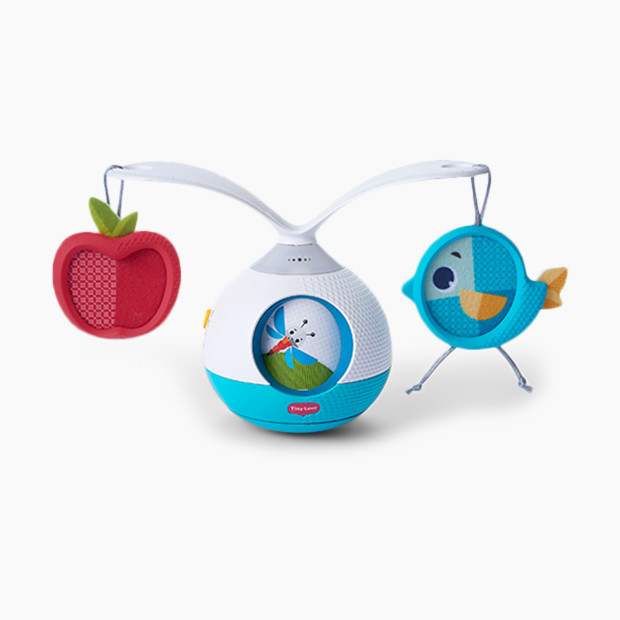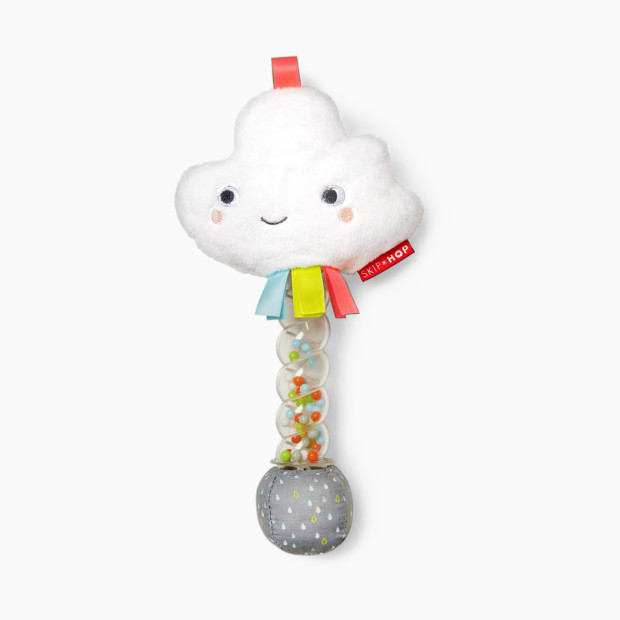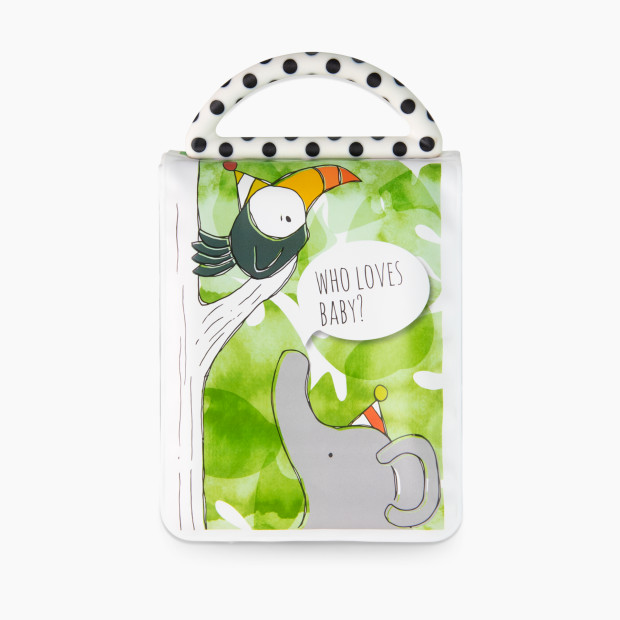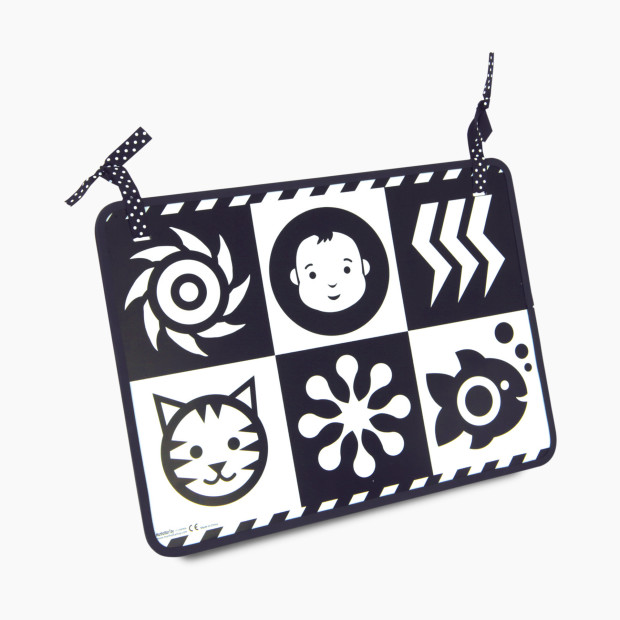
What is Tummy Time?
And the best 12 products you need to make it fun + easy

By Babylist Staff
Tummy time is one of the simplest things you can do with your little one—but did you know it’s one of the most important too? Tummy time is like a mini workout for your mini new addition. It builds your baby’s muscles and sets the stage for all sorts of important milestones like sitting, rolling over and even crawling. We’re breaking it all down for you: everything you need to know about tummy time, when and how to start, and our most-loved, parent-tested products for making it a little more fun for you and your baby.
What is Tummy Time?
Tummy time is pretty much what it sounds like: a time during the day that your little one spends on their tummy while they’re awake.
Tummy time became popular right around the time the American Academy of Pediatrics (AAP) launched the Back to Sleep, Tummy to Play campaign. This initiative recommends that parents and caregivers place healthy infants on their backs for sleep to reduce instances of SIDS, and on their tummies while they’re awake for play to prevent flat head spots and help with muscle development.
Why Do Babies Need Tummy Time?
Doing tummy time with your little one is more than just cute—it comes with a ton of benefits.
- Muscle development and improved motor skills. Tummy time helps babies strengthen the muscles in their necks, backs, trunks and shoulders. Your little one needs strong muscles to hit milestones like sitting, crawling and walking.
- Preventing a flat spot. While back is best for sleep, prolonged time on their backs can cause a flat spot on the head (called plagiocephaly) for some babies. Getting in a few sessions of tummy time each day can help prevent this.
When Do You Start Tummy Time?
A little one with no health concerns is never too young for tummy time. You can start from day one for short amounts of time each day and increase as baby gets older, stronger and more alert.
How Much Tummy Time Do Babies Need?
The AAP recommends that you do tummy time with your baby 2-3 times each day. A newborn tummy time session only needs to last a few minutes each time. As your little one grows, you’ll want to work up to about an hour of combined tummy time sessions each day by around 3 months of age.
How Do You Do Tummy Time?
Tummy time is the perfect excuse to spend some uninterrupted time interacting and having fun with your little one. Always do tummy time on a low, solid surface (preferably the floor) to keep your baby safe, and make sure other kiddos and pets are out of the way. If baby starts to get sleepy—which can happen pretty easily with a newborn—move them to a safe sleep space and place them on their back for a snooze.
Tummy time with little ones is all about keeping them interested in engaged. If you have the space and you’re looking for an all-in-one tummy + playtime solution, a baby gym is the way to go—and The Play Gym by Lovevery and the Farmstand Activity Gym by Skip Hop are two of our all-time favorites. Each is packed with features designed to captivate babies—a mirror that reflects your little one’s face, hanging toys they’ll want to grab, contrasting colors to stimulate their vision and more—and encourage muscle development.
Looking for a more minimalist solution to tummy time? You’ll want to start with a soft place for baby rest so they’re comfy and supported. For mats that get the job done for both parents and babies, Skip Hop’s Doubleplay matfeatures a padded, waterproof and wipe-clean surface and modern designs that won’t become the eyesore of your family room.
For a machine-washable solution, you’ll want to snag Crane Baby’s Playmat—perfect for snapping those Instagram-worthy pics too.
Now it’s time to get baby’s attention. There are a few ways to do that, but you can start with a basic grabbing toy like Manhattan Toy’s Skwish. The unusual look of this modern rattle encourages little ones to reach for it, and its unique design makes it easy for even the littles of hands to hold.
Ready to take it up a notch? Adding sounds and music toys to tummy time is another way to keep your little one engaged. The Tummy Time Mobile from Tiny Love is a classic choice for keeping a fussy baby happy during tummy time (and for making tummy time more fun in general) thanks to its music, lights and spinning toys.
If you don’t mind a bit more noise, we also love Skip Hop’s Rainstick Rattle that mimics the sound of a rain shower, and the Musical Pull Toy from Manhattan Toy, where babies can practice their gripping and pulling to hear “Rock-A-Bye Baby” and watch the smiling friends wiggle their way back up the string.
A few tips for using these toys during tummy time:
- Reach, reach, reach. Place toys in reach for younger babies and just out of reach for older ones. This will encourage your little one to reach and grab for what they want and aid in muscle development.
- Try a toy circle. Grab a few toys and put them in different positions around your baby, making a small circle. This helps baby learn to move in all different angles, building strength and agility.
Books and baby-safe mirrors also make perfect tummy time props. Look for books or flashcards that utilize bright colors or high-contrast black-and-white images (both visually stimulating for your little one’s developing eyesight) and baby mirrors that can be propped up horizontally at baby’s eye level during tummy time.
Babies love looking at faces—their own and those around them. The Look Book from Sassy is a soft, baby-friendly photo album that holds six photos of loved ones, and the Wimmer-Ferguson Mirror from Manhattan Toy lets baby get up close to their own face (plus it has high-contrast images on the back for more fun!).
And if you want to give flashcards a go, Art Cards from Giantsuper are a favorite thanks to their modern, high-contrast animal designs and the magnetic strip that turns each card into a mini easel, just right for propping up during tummy time.
Sources in article
- American Academy of Pediatrics, “Back to Sleep, Tummy to Play”: https://www.healthychildren.org/English/ages-stages/baby/sleep/Pages/Back-to-Sleep-Tummy-to-Play.aspx
- American Academy of Pediatrics, “Infant Sleep”: https://www.healthychildren.org/English/ages-stages/baby/sleep/Pages/default.aspx
